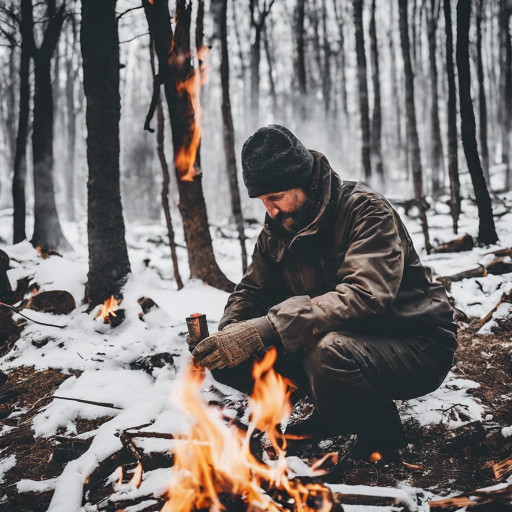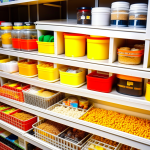Master Effective Fire-Starting Techniques for Surviving Harsh Winter Conditions
Starting a fire in frigid temperatures is not merely a skill; it is a critical lifeline for survival against the harsh elements that winter presents. With biting cold air and relentless winter winds, the ability to create warmth, light, and prepare food becomes paramount. As a dedicated survivalist, you recognize that fire is essential for maintaining body heat and providing comfort during outdoor adventures. However, the challenge of igniting a fire in icy conditions requires specific techniques and strategies. This comprehensive guide delves into the most dependable methods for effectively creating flames in the cold, empowering you with the expertise to thrive amidst winter’s icy grip in the wilderness.
Prepare with Essential Gear: Must-Have Supplies for Fire Ignition Success
Before you set off on your winter wilderness adventures, it is imperative to arm yourself with the right gear and supplies that can dramatically improve your chances of survival. A well-equipped fire-starting kit can make all the difference in overcoming the challenges posed by adverse weather. Be sure to include the following crucial items in your fire-starting arsenal:

a. Firestarters: Reliable ignition tools such as waterproof matches, storm-resistant lighters, and fire-starting rods are vital for ensuring a successful flame, even in challenging conditions like wind and moisture. Having multiple reliable options will bolster your confidence in your ability to start a fire, regardless of the obstacles you may face in the wilderness.
b. Dry Tinder: Finding dry tinder in frigid temperatures can be a daunting task, but being prepared is crucial. To tackle this challenge, pack highly flammable materials such as birch bark, fatwood shavings, and cotton balls soaked in petroleum jelly. These items not only ignite quickly but also significantly enhance your chances of successfully starting a fire when temperatures plummet below freezing, ensuring you can generate warmth when you need it most.
c. Kindling: Establishing a strong foundation for your fire is essential. Gather dry sticks, twigs, and leaves, ensuring they are completely moisture-free, as any dampness can hinder the ignition process and lead to frustration when attempting to spark a flame. Properly prepared kindling is crucial for transitioning from tinder to a robust fire, giving you the stability necessary for a successful burn.
d. Fuel: Securing dry firewood in cold conditions can be both exhausting and time-consuming. Therefore, it is vital to have a sufficient supply of dry firewood prepared in advance. This ensures that you can maintain a steady fire for an extended period, allowing you to stay warm and cook food comfortably, thus enhancing your overall survival strategy.
Select the Optimal Location for Your Fire to Enhance Performance
When the temperature drops, selecting the right location for your fire can yield significant advantages. Seek out sheltered areas, such as rock formations or dense shrubs, to minimize exposure to biting winds. By positioning your fire near a natural windbreak, you not only reduce heat loss but also increase the likelihood of maintaining a steady flame. Additionally, consider constructing a small wind-resistant shelter using logs or a tarp to shield the fire from precipitation, which helps retain warmth and significantly enhances your comfort and safety when outdoors.
Utilize the Layering Technique for Consistent and Effective Fires
A key technique for successfully igniting a fire in cold conditions is mastering the art of layering your materials. To build a fire that burns steadily, it is essential to utilize the three foundational layers: tinder, kindling, and fuel. Here’s a detailed overview of each layer and its critical role:
a. Tinder: The first layer, tinder, includes materials that ignite quickly and effortlessly. Use fine, dry substances such as grass, paper, or birch bark to ensure a robust initial flame. Having an ample quantity of tinder is imperative for achieving successful ignition, particularly in cold environments where conditions can be less forgiving.
b. Kindling: This second layer consists of small sticks and twigs that catch fire swiftly and provide sustained heat. Gradually add kindling to your flame, ensuring enough space between pieces to promote airflow and encourage combustion. This step is critical for transitioning from small flames to a larger, more stable fire, ultimately allowing you to achieve the warmth you need.
c. Fuel: Once a steady flame has been established, carefully introduce larger pieces of dry firewood. It is essential that the wood is completely dry, as it will burn longer and produce more heat. Gradually increase the size of the wood pieces, allowing the flames to grow stronger before introducing larger logs. This strategic approach to layering your fire facilitates a stable and sustainable flame, ensuring you can maintain warmth for an extended period.
The technique of layering your fire creates a structured setup that allows the flames to expand and sustain themselves effectively. Always ensure that you have an adequate supply of each component readily available to facilitate a smooth transition from tinder to fuel, guaranteeing a successful fire even in challenging conditions.
Enhance Your Fire-Starting Success with Proven Aids and Strategies
In extremely cold weather, utilizing additional fire-starting aids can significantly boost your chances of successfully igniting a fire against the challenges posed by low temperatures. Here are some effective methods to consider incorporating into your fire-starting routine:
a. Fatwood: Often referred to as nature’s firestarter, fatwood is resin-infused pine wood that ignites easily and burns with intense heat. You can gather these naturally occurring sticks from fallen pine trees or purchase them from outdoor supply stores. A few pieces of fatwood can drastically enhance your chances of successfully starting a fire in exceptionally cold conditions, serving as a reliable ignition source.
b. Alcohol-Based Hand Sanitizer: Surprisingly effective, alcohol-based hand sanitizer is highly flammable and serves as a potent accelerant. A small amount applied to your tinder or kindling can help ignite a fire rapidly, even in damp weather conditions, simplifying the fire-starting process and ensuring you can stay warm when it matters most.
c. Char Cloth: Char cloth is a specially prepared fabric that ignites easily from sparks, making it an excellent tool for starting fires using flint and steel or a lighter in challenging situations. Its lightweight and portable nature makes it an ideal addition to your fire-starting kit, ensuring you are always prepared and can respond quickly to changing conditions.
Incorporating these fire-starting aids into your cold-weather toolkit can significantly bolster your chances of success when facing particularly challenging conditions, allowing you to adapt to your environment effectively while ensuring warmth and safety.
Explore Advanced Fire Techniques Designed for Cold Weather Challenges
As a committed survivalist, continuously honing your skills is vital for your success in the wilderness. Here are two advanced fire techniques that excel in cold weather conditions:
a. Swedish Torch: Also known as a Canadian Candle or Finnish Fire Log, the Swedish Torch is an exceptionally effective method for starting fires. This technique provides a stable and long-lasting flame, perfect for combating the chill of winter. To create a Swedish Torch, find a log about knee-height and cut several vertical slits along its length. Place tinder in the slits and ignite it; the log will serve as a consistent fuel source, allowing the flame to endure for an extended period, providing much-needed warmth and safety.
b. Dakota Fire Hole: When faced with strong winds, the Dakota Fire Hole method proves to be highly effective. This technique involves digging a hole and tunneling horizontally underground to create an airflow vent. This design harnesses wind to enhance airflow, resulting in a more efficient fire that is less likely to be disrupted by gusty conditions. Furthermore, the Dakota Fire Hole method effectively reduces visible smoke while conserving fuel, making it an excellent choice for discreet fire building.
Regardless of the method you choose, always prioritize safety and responsible fire management to minimize risks and ensure a successful fire-starting experience. Proper planning and execution are essential for igniting a fire in cold weather.
Successfully starting a fire in extreme cold weather requires meticulous preparation and execution. By following these critical steps—assembling a reliable fire-starting kit, selecting an optimal location, mastering layering techniques, utilizing effective fire-starting aids, and embracing specific fire strategies—you will significantly enhance your chances of success. Remember, practice is key, so consistently train to refine your skills and boost your confidence. With these essential tactics for igniting fires in freezing conditions in your toolkit, you’ll be well-equipped to face the harshest winters that nature can throw at you. Stay warm, prioritize safety, and keep the flames of survival alive!
The post Fire Starting Methods for Survivalists in Cold Weather appeared first on Survival Bite.
The Article Fire Starting Techniques for Cold Weather Survival Was Found On https://limitsofstrategy.com


Engaging with the elements during winter can truly test our resourcefulness, often teaching us lessons about resilience and adaptability. I recall a winter camping trip where I underestimated the need for adequate fire-starting tools. I found myself relying on natural tinder, which was challenging due to the frosty conditions. That experience reinforced my appreciation for preparation, especially the importance of including materials like waterproof matches and fire starters in our gear.